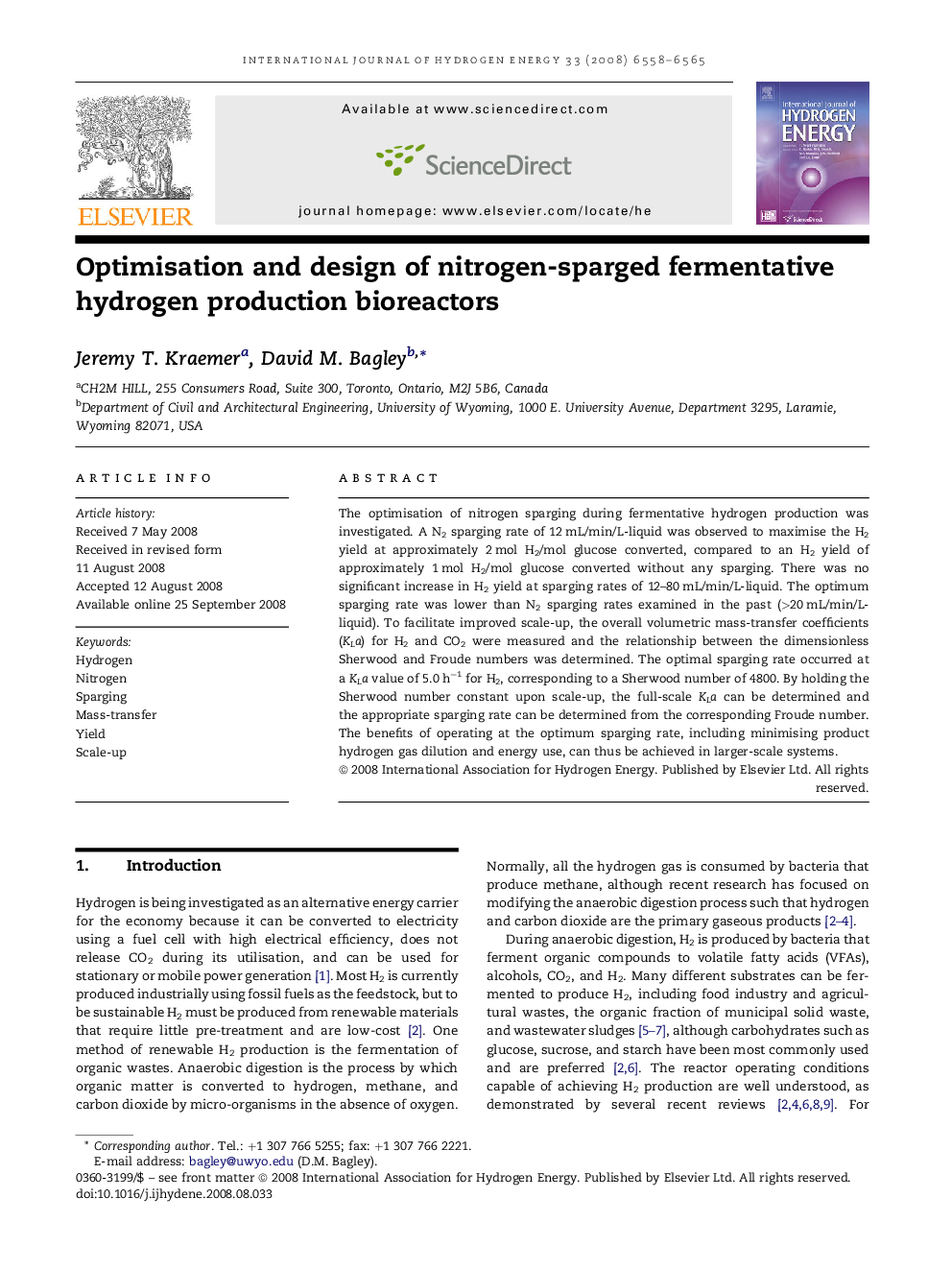| Article ID | Journal | Published Year | Pages | File Type |
|---|---|---|---|---|
| 1283523 | International Journal of Hydrogen Energy | 2008 | 8 Pages |
The optimisation of nitrogen sparging during fermentative hydrogen production was investigated. A N2 sparging rate of 12 mL/min/L-liquid was observed to maximise the H2 yield at approximately 2 mol H2/mol glucose converted, compared to an H2 yield of approximately 1 mol H2/mol glucose converted without any sparging. There was no significant increase in H2 yield at sparging rates of 12–80 mL/min/L-liquid. The optimum sparging rate was lower than N2 sparging rates examined in the past (>20 mL/min/L-liquid). To facilitate improved scale-up, the overall volumetric mass-transfer coefficients (KLa) for H2 and CO2 were measured and the relationship between the dimensionless Sherwood and Froude numbers was determined. The optimal sparging rate occurred at a KLa value of 5.0 h−1 for H2, corresponding to a Sherwood number of 4800. By holding the Sherwood number constant upon scale-up, the full-scale KLa can be determined and the appropriate sparging rate can be determined from the corresponding Froude number. The benefits of operating at the optimum sparging rate, including minimising product hydrogen gas dilution and energy use, can thus be achieved in larger-scale systems.
